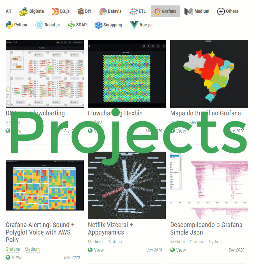Convert mov to mp4
https://mrcoles.com/convert-mov-mp4-ffmpeg/
ffmpeg -i my-video.mov -vcodec h264 -acodec mp2 my-video.mp4
ffmpeg -i input.mov -vcodec h264 -acodec aac output.mp4
find . -iname "*.mov" | while read filename; do
filenameto=$(echo $filename | sed 's/\.wmv$/\.mp4/g')
echo "filename: $filename";
[ -f "${filename}.mp4" ] && continue
docker run --entrypoint=/bin/bash -v "`pwd`:/local" linuxserver/ffmpeg -c "
ffmpeg -i \"/local/${filename}\" \
-vcodec h264 \
-acodec aac \
\"/local/${filename}.mp4\"
"
done
Convert ts to mp4
#!/bin/bash
#https://askubuntu.com/questions/716424/how-to-convert-ts-file-into-a-mainstream-format-losslessly
find ./completed -mmin +60 -iname "*.ts" | while read filename; do
filenameto=$(echo $filename | sed 's/\.wmv$/\.mp4/g')
echo "filename: $filename";
[ -f "${filename}.mp4" ] && continue
docker run --entrypoint=/bin/bash -v "`pwd`:/local" linuxserver/ffmpeg -c "
ffmpeg -i \"/local/${filename}\" \
-c:v libx264 \
-c:a copy \
\"/local/${filename}.mp4\"
"
done
Convert avi to mp4
#!/bin/bash
find ./completed -mmin +60 -iname "*.avi" | while read filename; do
echo "filename: $filename";
[ -f "${filename}.mp4" ] && continue
docker run --entrypoint=/bin/bash -v "`pwd`:/local" linuxserver/ffmpeg -c "
ffmpeg -i \"/local/${filename}\" \
-c:a copy \
\"/local/${filename}.mp4\"
"
done
Convert mkv to mp4
#!/bin/bash
find ./completed -mmin +60 -iname "*.mkv" | while read filename; do
filenameto=$(echo $filename | sed 's/\.mkv$/\.mp4/g')
echo "filename: $filename";
[ -f "${filename}.mp4" ] && continue
docker run --entrypoint=/bin/bash -v "`pwd`:/local" linuxserver/ffmpeg -c "
ffmpeg -i \"/local/${filename}\" \
-codec copy \
\"/local/${filename}.mp4\"
"
done
Convert wmv to mp4
#!/bin/bash
find ./completed -mmin +60 -iname "*.wmv" | while read filename; do
filenameto=$(echo $filename | sed 's/\.wmv$/\.mp4/g')
echo "filename: $filename";
[ -f "${filename}.mp4" ] && continue
docker run --entrypoint=/bin/bash -v "`pwd`:/local" linuxserver/ffmpeg -c "
ffmpeg -i \"/local/${filename}\" \
-c:v libx264 \
-crf 23 \
-c:a aac \
-q:a 100 \
\"/local/${filename}.mp4\"
"
done
https://superuser.com/questions/73529/how-to-convert-wmv-to-mp4
ffmpeg -i input.wmv -c:v libx264 -crf 23 -c:a aac -q:a 100 output.mp4
This will encode the video to H.264 video and AAC audio, using the default quality. To change the quality for the video, use a different CRF value, where lower means better, e.g. 20 or 18. For audio, 100% is the default quality. Increase the value for better quality.
For the AppleTV specifically, this is what Apple says it supports:
H.264 video up to 1080p, 30 frames per second, High or Main Profile level 4.0 or lower, Baseline profile level 3.0 or lower with AAC-LC audio up to 160 kbit/s per channel, 48 kHz, stereo audio in .m4v, .mp4, and .mov file formats
So, you could use the following command to force the 30 Hz frame rate and High profile:
ffmpeg -i input.wmv -c:v libx264 -crf 23 -profile:v high -r 30 -c:a aac -q:a 100 -ar 48000 output.mp4
#!/bin/bash
find . -mmin +60 -iname "*.wmv" | while read filename; do
filenameto=$(echo $filename | sed 's/\.wmv$/\.mp4/g')
echo "filename: $filename";
[ -f "${filename}.mp4" ] && continue
docker run --entrypoint=/bin/bash -v "`pwd`:/local" linuxserver/ffmpeg -c "
ffmpeg -i \"/local/${filename}\" \
-c:v libx264 \
-crf 23 \
-c:a aac \
-q:a 100 \
\"/local/${filename}.mp4\"
"
done
Scripts
import os
import datetime
import random
import toil
import json
import youtube_dl
def get_vid_duration(rootdir, vidname):
print("gen_vid_duration", rootdir, vidname)
#cmd = f"docker run -i --rm -v {rootdir}:/local linuxserver/ffmpeg -i /local/{vidname} -f null - | grep Duration"
cmd = f"docker run -i --rm -v {rootdir}:/local sjourdan/ffprobe /local/{vidname} -v quiet -show_streams -select_streams v:0 -of json"
output = json.loads(os.popen(cmd).read().strip())
dur = int(float(output['streams'][0]['duration']))
return dur
#old
#output = output.split("Duration: ")[1].split(",")[0]
#output = [int(float(i)) for i in output.split(":")]
#t = datetime.timedelta(**dict(zip(["hours", "minutes", "seconds"], output)))
#return t.seconds
def gen_vid_thumbnail(rootdir, vidname, jpgname):
tseconds = get_vid_duration(rootdir, vidname)
# get random ss
ss = random.randint(2,tseconds-1)
cmd = f"docker run -i --rm -v {rootdir}:/local linuxserver/ffmpeg -i /local/{vidname} -vframes 1 -an -ss {ss} -vf scale='min(200\,iw)':-1 /local/{jpgname} -y"
return os.system(cmd)
def split_vid(rootfolder, inputfile, outputfile, ss, tt):
cmd = f"docker run -i --rm -v {rootfolder}:/local linuxserver/ffmpeg -ss {ss} -i '/local/{inputfile}' -t {tt} -async 1 -y '/local/{outputfile}'"
return os.system(cmd)
def gen_split_chunks(rootfolder, filename):
import math
dur = get_vid_duration(rootfolder, filename)
if dur < 50:
return
step = 50
iters = 10
if dur < 500:
iters = math.ceil(dur/50)
step = math.ceil(dur/iters)
ret = []
for i in range(iters):
ss = i*step
tt = step
if ss+tt > dur:
dur = tt-ss
ret.append([ss, tt])
ss += tt
return ret
def gen_thumbs():
vault = toil.load_json("./vault.json")
for fileuse in vault:
print(fileuse)
vidname = fileuse
jpgname = ".".join(vidname.split(".")[:-1])+".jpg"
print(vidname, jpgname)
if os.path.exists(f"/root/insta/thumb/{jpgname}"): continue
gen_vid_thumbnail("/root/insta/", "/files/"+vidname, "/thumb/"+jpgname)
if __name__ == '__main__':
gen_thumbs()
def download_yt(link, fileto, it=0):
mapit = [
"bestvideo[ext=mp4]+bestaudio[ext=m4a]/mp4",
"bestvideo+bestaudio/mp4",
"bestvideo+bestaudio",
"bestvideo",
]
print(">>it", it, fileto)
fmt = mapit[it]
#ret = os.system(f"docker run -i --rm -v /tmp:/workdir mikenye/youtube-dl -f '{fmt}' -o {fileto} --merge-output-format mp4 {link}")
ret = os.system(f"youtube-dl -f '{fmt}' -o /tmp/{fileto} --merge-output-format mp4 \"{link}\"")
if ret != 0:
return download_yt(link, fileto, it+1)
return ret
def fetch_yt_meta(link):
with youtube_dl.YoutubeDL() as ydl:
meta = ydl.extract_info(link, download=False)
return meta
def insta_optimize(filefrom, newfile, rootfolder):
cmd = f"docker run --rm -v {rootfolder}:/local linuxserver/ffmpeg -i /local/{filefrom} -vf \"pad=w=max(ih*4/5\,iw):h=ih:x=(iw-ow)/2:y=(ih-oh/2):color=black,pad=w=iw:h=max(iw*9/16\,ih):x=(iw-ow)/2:y=(ih-oh/2):color=black\" /local/{newfile}"
ret = os.system(cmd)
return ret

